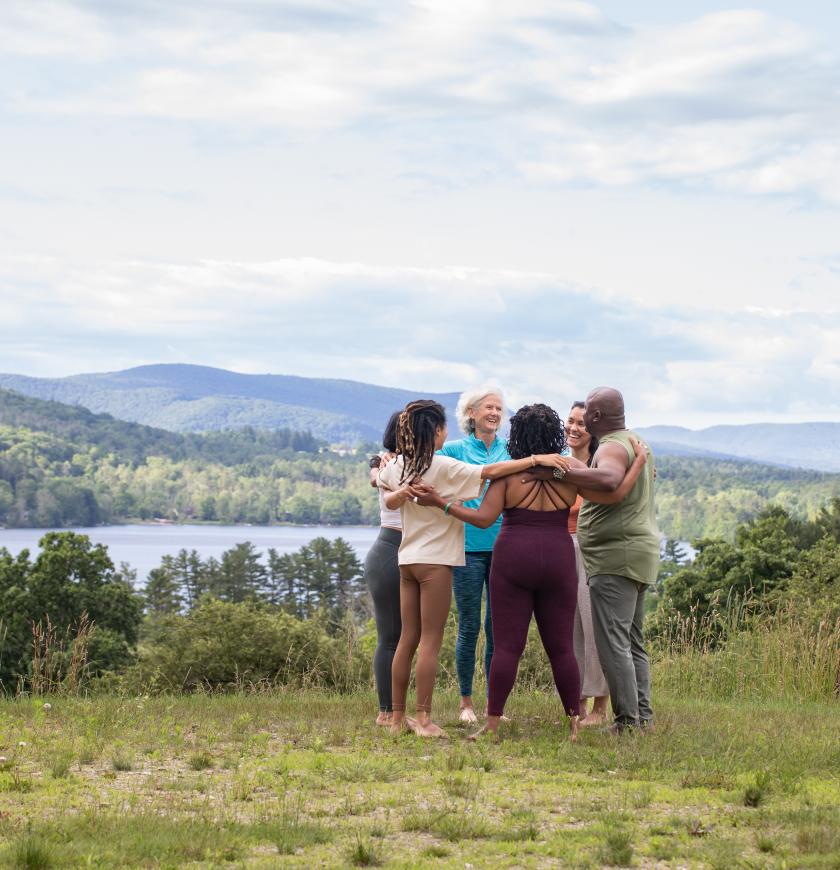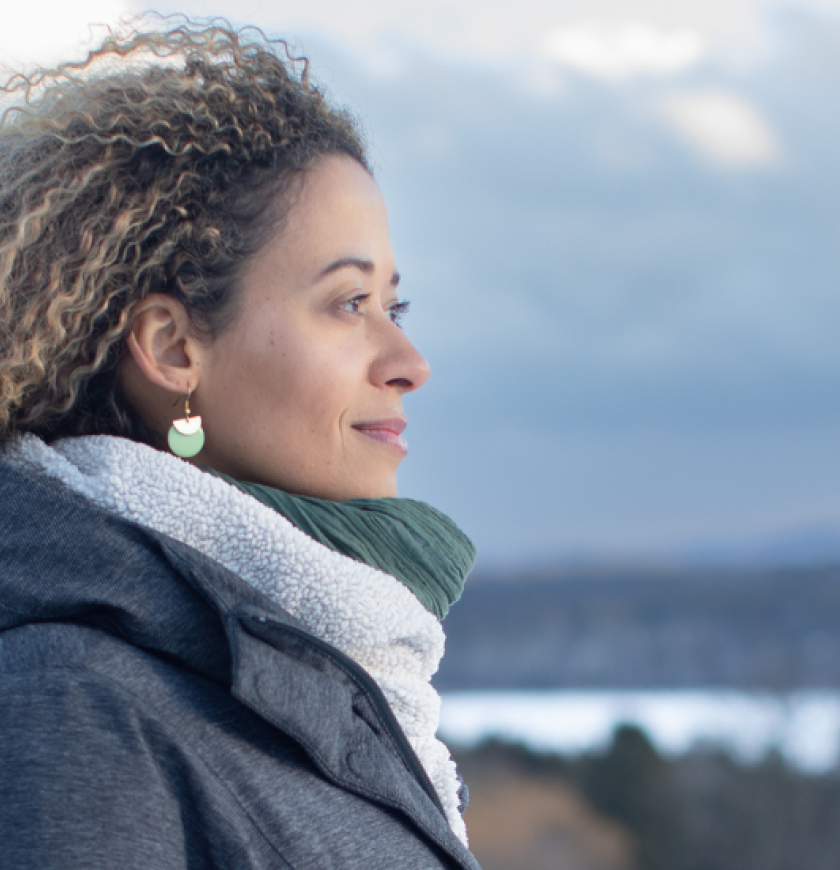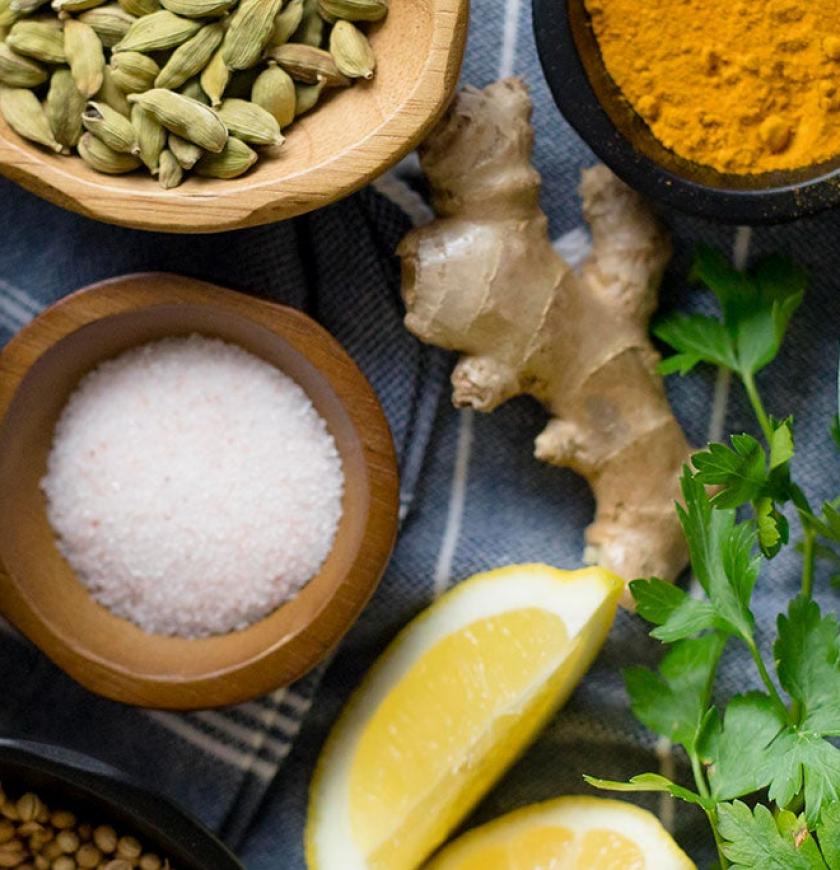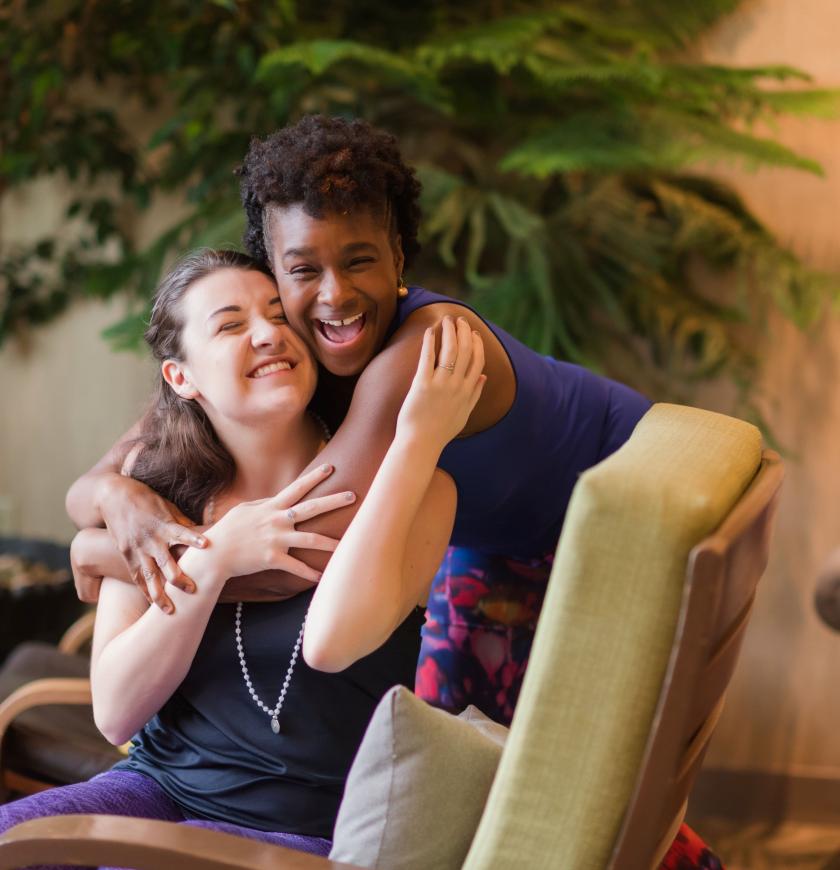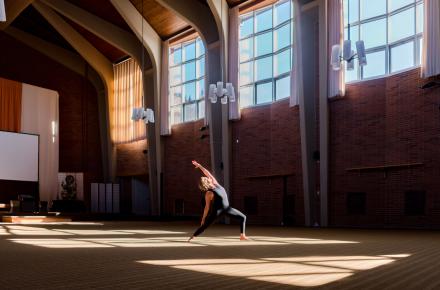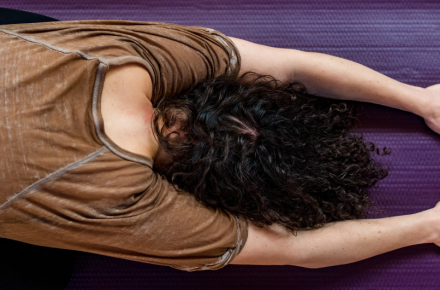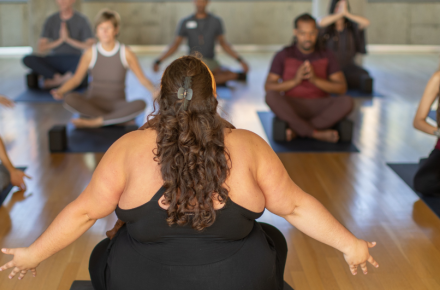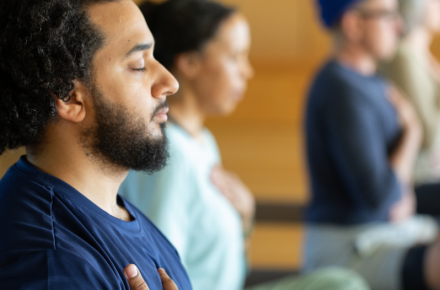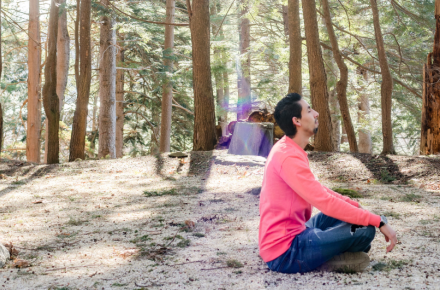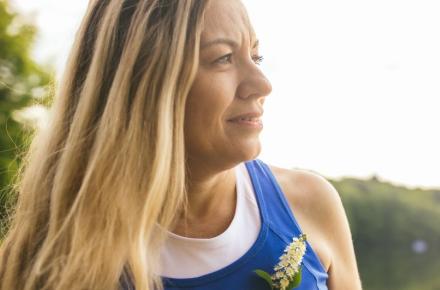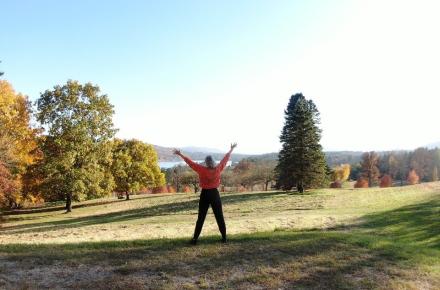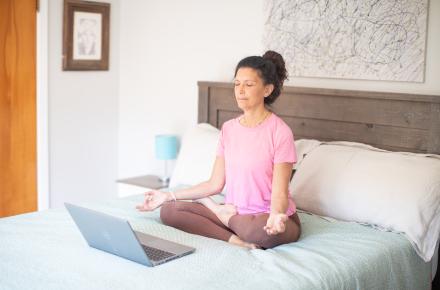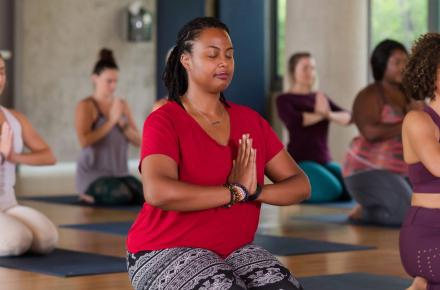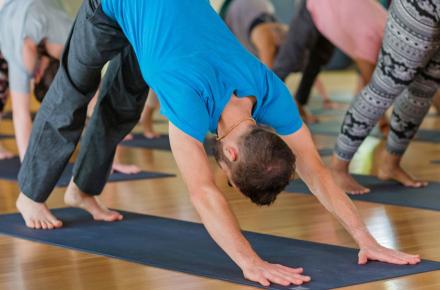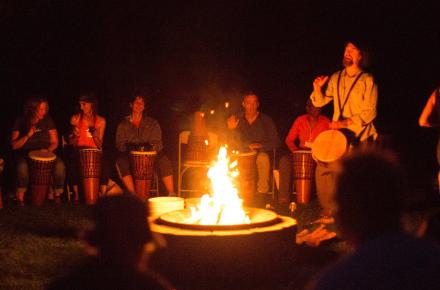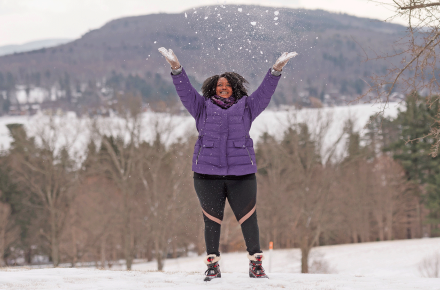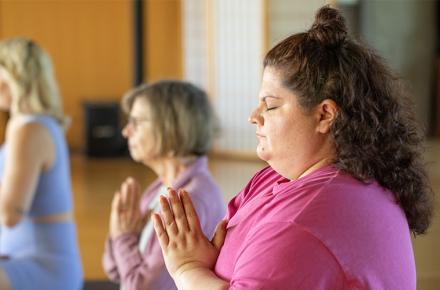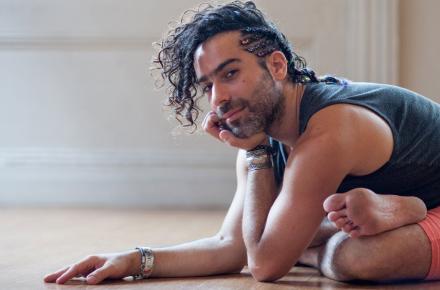Yoga Mat as Launching Pad: How Your Practice Can Prepare You for Social Action

by Nadia Colburn
Do you sometimes (or often) feel overwhelmed by the news these days?
I know that when I feel overwhelmed, I find it helpful to come back to my mat, to connect with my breath and my body and recharge. Whether it’s the news or our work or family dynamics, our yoga mat can be a place to come back to our center, to de-stress, to remember who we really are.
This can sometimes lead us to think that there is a dichotomy: on the one hand there is the world out there, and on the other hand there is our yoga practice; on the one hand there is the world of others, and on the other hand there is the safer world of the self.
I often feel this way, but ultimately, living in this dualistic manner is also tiring and can only get us so far in our practice. While it may seem counterintuitive, I find it more helpful to go back to the roots of yoga and to remember that yoga traditionally means union: union between mind and body, self and other, internal and external—yes, even union between self and this crazy, confusing, loud, and often alarming world we’re living in.
In America today, most yoga focuses on asanas, physical practices. I certainly first turned to yoga as a physical practice: I wanted to get some exercise, relieve stress, and become more flexible.
But that physical practice was an opening into a larger, more encompassing experience: By coming into the present moment with awareness as I moved, and by letting go of tensions that are stored in my body through physical practice, I was able first to notice the split between my own mind and body and then to bring mind and body closer together. And this was an opening to a different way of being in the world.
Yoga made me healthier and more flexible in my body, yes, and also in my mind and in my emotions. I found myself more able to understand myself, to connect with my own story; better able to stay focused and centered not only on the mat in challenging situations, but also off the mat as well.
But the main fruit of my practice isn’t really about the self—important and transformative as these changes are. It’s those moments when the self opens to something bigger, when the boundaries fall away, when I see into the amazing wholeness of the world—yes, really, even our crazy, often upside-down world.
And, ultimately, this is the real fruit of our practice.
In Pantanjali’s Yoga Sutras, the almost 2000-year-old classical text on yoga, physical practice is only the third of the eight limbs of yoga. The first limb, yamas, concerns itself with universal morality and the second, niyamas, concerns the personal application and observance of that moral code. In other words, our values and how we interact with the world through our values are the roots of our practice. The physical asanas are a bridge between these first two limbs and the next four limbs, which include pranayama and various stages of meditation, which concentrate the mind. Finally, the eighth and ultimate stage of yoga is samadhi, oneness, in which subject and object merge; inner and outer are no longer distinct.
So what does that mean for us today? When we go back to the original yogic teachings, we see that our practice is meant to connect us with one another and that many of the dualities in which we often get caught are actually dissolved through the tradition itself.
We can get caught in the idea that we should leave our values and social engagement outside the door of the yoga studio, or leave the world outside our mat. And when we try to bring the two together, we often have a difficult time and feel like we’re walking a tricky line.
I’ve been having a similar conversation again and again in the spaces where I teach: How do we support all of our students in a caring, nonjudgmental atmosphere while also speaking and living our values? How can we provide places of practice and refuge while also remaining true to our values? And how do we support these values without getting into the sometimes ugly fray of politics?
Politics often leads to dualistic thinking. Similarly, political thinking often prompts us to think in terms of external outcomes versus internal values; when we make political calculations, we may decide to overlook a moral value in service of a greater external outcome. But yoga, by contrast, prepares us for a state of union with ourselves and with our values where we are not making these kinds of distinctions.
When we practice, yes, we might need to close the door and turn off the news so that we can come into greater concentration. But we are not practicing with the goal of remaining in that condition of isolation. Instead, we are practicing so that we can live the values of not harming others and so that we can experience wholeness and connection—with ourself and with others— everywhere we go.
So does that mean you can’t get a break from the news through your yoga practice? No. But maybe it means that, with practice, you don’t need to create such duality between the news and the outer world. Maybe our yoga practice can help us turn to the news with more of the qualities we bring to the mat: presence, equanimity, strength, and flexibility.
And how do we do this? Like our asana practice, it is just that: a practice. We may not be able to come into Handstand or touch our hands to our toes in Forward Fold. That doesn’t matter. What matters is that we meet ourselves where we are with acceptance and with the intention of deepening our practice and of growing into those amazing moments when we can see beyond our own boundaries.
After all, when yoga class ends, the world, with all its wonder and all its complexity and all its news will still be there.
So, instead of blocking that world out, what if we come to the mat with the aspiration of bringing more of our best, biggest, most flexible selves with us wherever we go?
Nadia Colburn, PhD, is a certified yoga teacher and coach. Her unique approach brings embodied mindfulness to the writing life and explores the intersection of personal and social transformation. Nadia’s writing has appeared widely in publications including the New Yorker, American Poetry Review, Boston Globe Magazine, Slate, Spirituality and Health, and Lion’s Roar. nadiacolburn.com
© Kripalu Center for Yoga & Health. All rights reserved. To request permission to reprint, please e-mail editor@kripalu.org.
